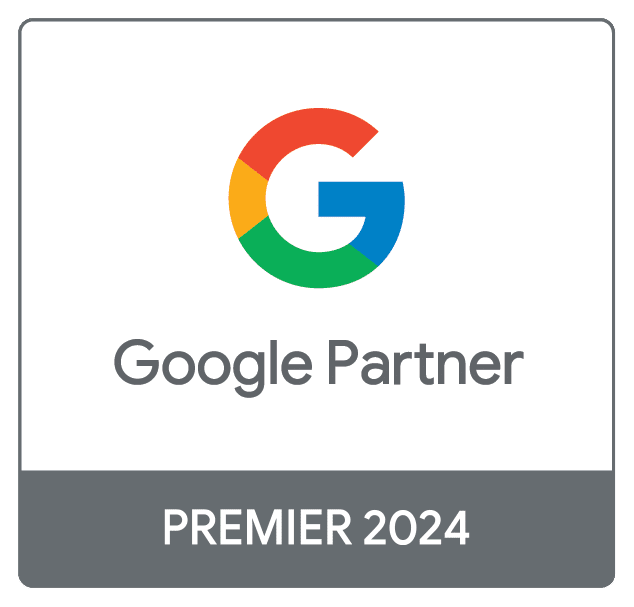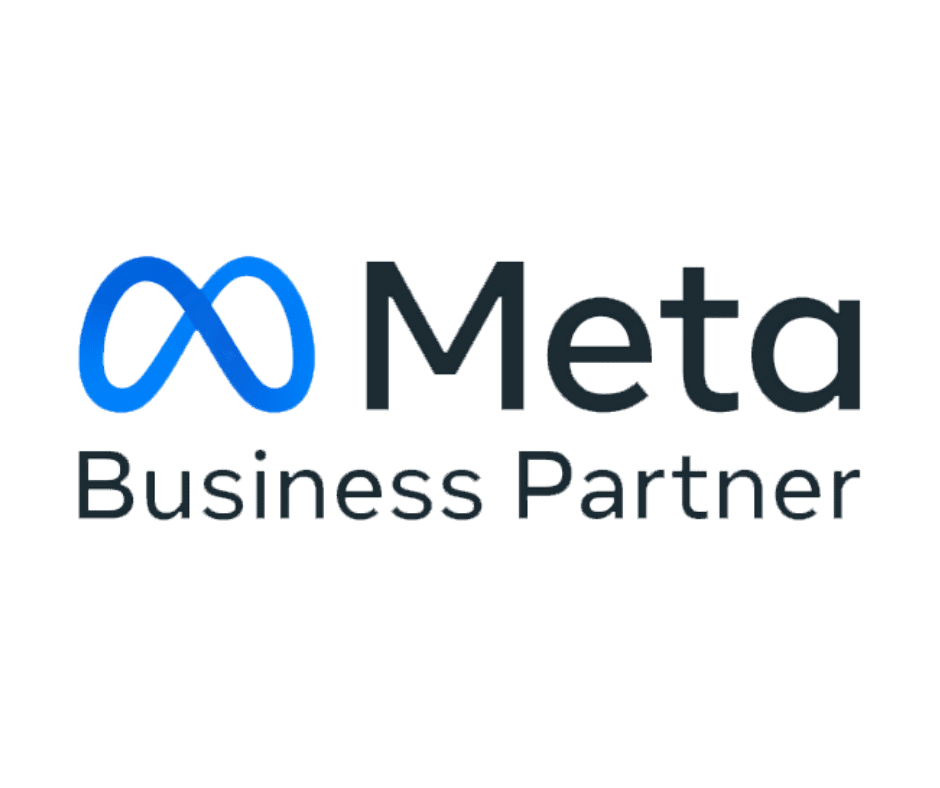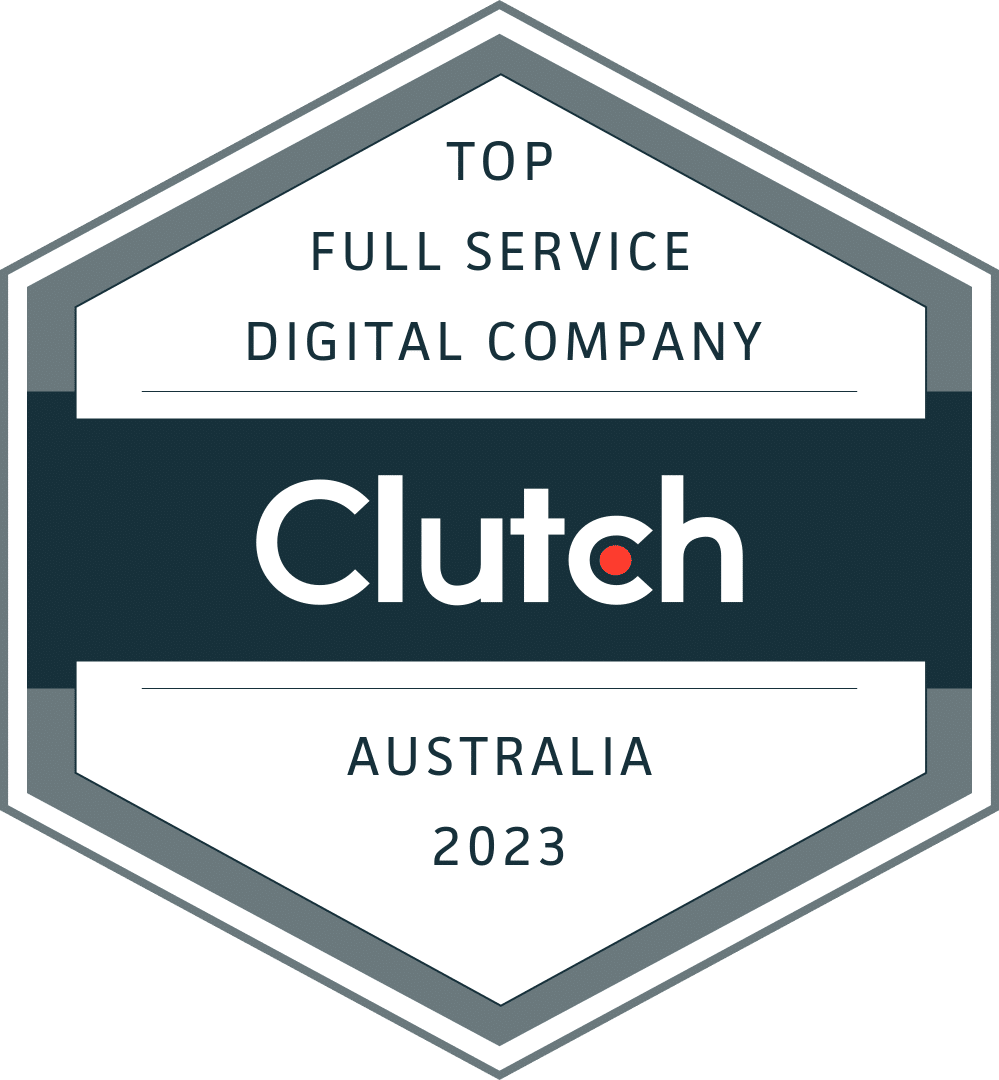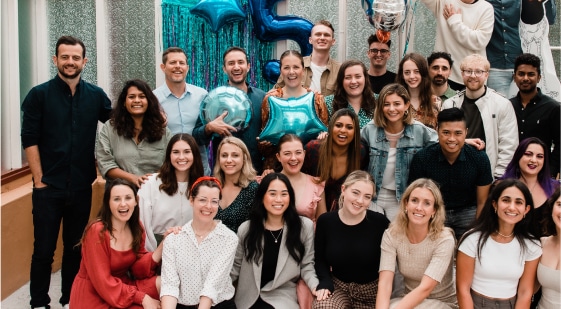Generating High Quality Leads in B2B SaaS with Axel Sukianto
Episode Description:
This episode explores how to effectively generate leads and sales in a B2B SaaS content. Marketing Director at UpGuard, Axel Sukianto, discusses the differences between demand capture and demand creation, brand building, and the future of attribution.
Key Takeaways:
- Demand Capture vs Demand Creation.
- Brand Building and measuring your brand.
- The future of attribution.
- Differences between B2B Marketing in Australia vs Globally.
- Revenue is at the centre of all marketing.
Featuring:

Axel Sukianto
About the Guest:
Axel is a B2B marketer with experience in tech, SaaS, and cybersecurity. A revenue and demand gen marketer, he has a passion for driving hyper-growth through pipeline and revenue. He is currently at UpGuard, a B2B SaaS cybersecurity company where he leads the demand gen and content team. Previously he has worked at companies such as Dropbox, Meraki, and Cisco in Sydney and Singapore.
Follow him on LinkedIn and visit his website.
Podcast Summary: Effective Lead Generation Strategies for B2B SaaS Companies
Highly-experienced B2B marketer, Axel Sukianto explores proven strategies to effectively generate leads and sales for your B2B SaaS business on the Smarter Marketer podcast.
Lead generation for a B2B SaaS business can be a struggle, let alone genenerating high-quality leads that are likely to turn into paying customers. Complex sales-cycles, long buyer journeys and being able to measure ROI pose unique challenges to building an effective marketing strategy.
Read on for practical ideas on generating high-quality leads for your B2B SaaS business.
Demand Generation: Moving Prospects Down the Funnel
While demand generation is at the centre of a solid B2B marketing strategy, it’s effective to split this into two main spheres; demand capture v demand creation.
Demand capture is generally the easier part of the two. You know that there is a buyer that is interested in your product, and it’s your responsibility to capture them in your sales funnel. Bottom-of-funnel search ads using Google Ads is a great example of a marketing channel that is able to capture this type of lead - showing they’re active and genuinely interested in a purchase.
Demand creation is the harder part. How do you move people down the funnel from them not knowing they even have a problem, to knowing that they have a problem and your brand offers them the solution?
The ability to effectively run demand creation separates the strong demand generation professionals from those that strive simply for short-term success.
This is a key element of brand building.
How does attribution fit into brand building?
In short, brand building and performance marketing are two sides of the same coin.
Axel advises that over 50% of your marketing activity should be put towards brand building and generating brand awareness, while the reminder should be placed towards demand generation. This is critical for any business to achieve long-term success.
This is because a B2B SaaS consumer is connecting to your brand through multiple complex touch points - conversations with stakeholders, heavy research, competitor comparisons and so on. Relying on the attribution of a single channel as the ultimate source of conversion is misleading, and not effectively showing you the value of the entire sales journey (i.e. your brand).
How to get buy in from your stakeholder into brand building
How do you bring managers, directors and the c-suite on the journey of brand building when they make comments such as; ‘I’ve got left over marketing budget, let’s just put it into Google Ads and get some sales’?
Most buyer journeys in the B2B SaaS space take years before a purchase, and this is unlikely to change just because you invested some dollars into Google Ads.
You need to prove that your brand is an asset.
To measure a brand is extremely tough - but it’s also extremely important. Your CEO is always going to care about revenue. If your revenue is going up and sales are increasing, this is showing you that your brand is improving. Setting aside reasonable marketing budget to invest in top-of-the-funnel, long-term marketing keeps your brand and product/service at the forefront of your audience’s mind for when they’re ready to purchase.
Note: Google Search Consule is an effective tool that allows you to see how many people are searching for your brand. This is a proxy of how your brand is building.
What are the best types of marketing activities for demand generation?
Activities that work well for demand capture:
Think of this as targeting people who are already in the market and are ready to buy:
- Paid media: Google ads, Facebook ads and LinkedIn ads. Investing in paid media is a solid, bottom-of-funnel activity that reminds consumers that your product is there and ready for them to purchase.
- CRO and website optimisation: This is absolutely key to pulling users further down the funnel, especially if you’re running ads to these landing pages. It’s creating a hyper-customised experience that cater to individual searches and needs.
- Content is key: Buyers educate themselves in a different style to what they did in the 90s or early 2000s. Consumers are going to research before they engage with a sales person and your content should provide practical and sufficient answers for them.
How do B2B SaaS marketing efforts differ for international markets?
You need to tailor your marketing strategy to different social and cultural contexts that you are selling in.
This means that you must have a solid understanding of the individual buyer journeys for your multiple international audience segments; what platforms are they using, what communication channels do they value, what messages are going to resonate with them?
For example, in North America, trade shows and in-person sales events are huge! Many businesses perceive that if you are involved in a trade-show, then you are profitable and successful enough to survive over the next few years. On the other hand, in many Asian markets most of the buyers journey takes place through digital communication, on channels such as Whatsapp.
What’s the direction of B2B SaaS over the next few years - especially in digital?
The introduction of the internet has lead to the false impression that everything is trackable, and data tells the whole story (and incorrectly that attribution gives us all the answers). At the end of the day, it’s less about bounce rates/ time spent on a page, and more about the revenue that you are generating for the business.
This is especially true when considering word of mouth and referrals - and even more the case when your brand become the reason someone decides to purchase your product/service.
You need to curate a positive experience within interaction a consumer may have with your brand over an extended period of time.
As a marketer, you are a brand custodian
It is your responsibility to grow the brand awareness for your company.
There are one million (or so) marketing activities that you can do, but what are the five things that you are going to do over the next six months and why? As marketers, we have infinite choice in the different areas we can play in. It is our responsibility to make decisions that is going to create longevity for the brand and for sales.
Read our B2B marketing strategy guide
We have put together a list of 9 things we see the best B2B marketers doing. Most importantly, we outline why each area is important and what you can do to deliver in a very practical way.
If you’re struggling with B2B SaaS lead generation and want to see stronger results from your digital channels, get in touch. We would love to help grow revenue for your business.
Transcript
James Lawrence: Today I am here with Axel Sukianto. So Axel is currently the marketing director of Upguard responsible for demand generation. Upgrade is a cyber security platform that helps global organisations prevent data breaches, monitors third party vendors and improve their security posture. Posture?
Axel Sukianto: Yeah.
James Lawrence: Posture. I like that. It's good. Previously, Axel was marketing manager at Haringey, and prior to that he held roles at Cisco and Dropbox. So lots and lots of experience in B2B. Hence the topic of today's discussion Axel, around generating high quality leads in B2B SaaS. So Axel, welcome to the Pod. I think where I'd like to start is just your journey. I think when we first met each other, we had some mutual connections that had nothing to do with marketing, and I dug into it and realised that you, like me, were a reformed lawyer that had moved into a space you're more passionate about. So maybe just for the listeners, I guess we've got an audience of in-house marketers and marketers around Australia, some who have kind of come at it through traditional business courses, marketing courses, comms courses, but your journey is a little bit different. So just talk to us about that.
Axel Sukianto: Yeah, totally. So not too dissimilar to your journey, James. I actually went to law school at W here in Sydney and I actually worked as a lawyer for about three years. So I worked specifically on like venture capital and private equity sort of deals where I saw businesses growing by buying other businesses, mergers and acquisitions. I did that for about three years and I realised that I wanted to be on the other side of the boardroom where instead of advising like legal deals, I wanted to be part of the joy in growing the business. So I remember, I remember doing that and I went, okay, I want to be on the other side. What are the roles that really impact the growth and the revenue of the business? And to me, two things jumped out. One of them was sales and the other one was marketing. And at the time like 20 something me went, okay, I want to do one. I want to be part of the role that really moved the needle. And marketing obviously, like moves the needle in a more one to many sort of motion compared to 1 to 1 in sales.
James Lawrence: Love it. So how did you do it? You know, you're in third and fourth year of a big law firm. How did you convince someone to give you a go as a marketer?
Axel Sukianto: Oh, that's actually an excellent question. So I remember specifically at that point in time where I went, this is where I've had it. I was actually traveling overseas and I was like, I don't don't love this. I love more of the growing the business. And I went, okay, I'm going to hop on sick and then I'm going to search for a job. And at that point, I realised I did not know what to search for. So luckily for me, one of my really good friends now, she's also a reformed lawyer. She just made the jump at Dropbox at the time just landed in APAC and opened up a Sydney office and they were looking for ex consultants, ex lawyers. There's really smart people to sort of head up their SMB sales and marketing team. So I got it in through there, applied and spoke to a number of them in the Sydney office and I got the job.
James Lawrence: That's so cool. The last question about your previous life. I get asked this all the time and I generally say I don't think at all. But what how is your legal career helped your marketing career?
Axel Sukianto: Immensely. I think in terms of the legal career, it's the problem solving aspect that I really thought helps me here because it's one of those things where at university you do all these group assignments, you learn all these things that you may not necessarily use in your practical professional life, but it's the problem solving aspect of it that really helps you baseline against. Deal with sort of projects. I think that's really it. It's a critical thinking, but ultimately I think any legal role has a lot of drafting and a lot of writing. Yeah, like the baseline of to me, the baseline of a good marketer, is really strong ability to write copywriting, conversion, long form writing. So that eye to detail is really important. So I think it's helped me start my marketing career.
James Lawrence: Maybe it has helped me more than I give it credit. That's good. That's a good insight there. So in terms of Upguard, if you could just talk, I guess, about the organisation, I kind of gave that brief introduction, but what the business does and then your role within it?
Axel Sukianto: Yeah, totally. I think you gave an excellent overview. Upguard is a B2B SaaS platform. We're specifically in cybersecurity. So we use a number of different tools to help our customers improve their security posture. And I know you joked a little bit, but these days cybersecurity is top of mind for a lot of people and mostly a lot of C-suite levels. And we're seeing data breaches happen honestly, daily, and Upguard is one of those platforms that helps using our proprietary engines and our folks who do what we call data leak detection to basically proactively identify the security exposures for companies so that they can prevent these data breaches happening and they can improve their security posture.
James Lawrence: I think it's interesting on the site the way you guys deal with pricing in a fairly transparent kind of way. There's obviously ranges as there typically is with SaaS. What sort of businesses are you typically and organisations are you working with, like how small and how big?
Axel Sukianto: So on that pricing point, I think we truly believe like a transparent pricing is really important for people as they assess you, as they become more aware of your product and solution, that's really important. But we work across different sizes so we have those really large enterprises. Some of our some of our customers are listed on our website. To really small shops where they have like 1 or 2 security people who are trying to improve their security posture, identify that they're in a really important area.
James Lawrence: And so I guess like the theme of today is demand gen in B2B SaaS, right? And conscious that, you know, there's going to be competitors that don't want to listen to the pod and get insights that they shouldn't. But so I guess more broadly across all of your experience in B2B SaaS, what works? Like is it as simple as just running Google ad campaigns, bottom of the funnel lead gen, or is it a more nuanced proposition to kind of truly run high quality B2B dimension these days?
Axel Sukianto: So I think there's this dimension, I think has been a term for a long time. But I feel like starting from last year or this year, we're starting to see some practitioners in the market sort of split it into two separate realms, so to speak. There's the demand creation aspect and the demand capture of it. And in terms of the demand creation, that's that's the hard one. And the demand capture is probably the easier one in a sense. So I'll talk about a little bit of both. That's the philosophy that I try to go by in terms of what we do in terms of dimension in sort of any company, the demand capture, I'll start with there.
Axel Sukianto: That's the stuff that look, the demand is there. You know that there's a buyer who is interested in it. Your job is to capture it and how do you do that? So I think Google ads is one where you know that. So James is searching for Nike shoes and then you know that you want these Nike shoes. So you search Nike shoes and the Google ad shows up and it serves you the correct place. You create the right path for them to buy this. If they know your brand name, they know what they’re buying for. You want to capture the demand and convert them into a paying customer. But the really hard part, I think any B2B SaaS company, I think that the demand creation aspect of it, how do you move people down the funnel along from them not knowing they have a problem to knowing they have a problem, but knowing about your solution, you’re going to create that demand for yourselves. And that's really, I think, what really distinguishes really strong demand gen professionals versus just the people like okay I'm working for or a well known company that people know who I am and all you just capture the demand and they can just run ads and run a website and sort of let that run. But really the hard part is that creation of it, if you're starting a company, how do you create that demand that people wanting to come to you? That's the hard part of it.
James Lawrence: And when you think of demand capture, including non-branded Google ads in that kind of space where people have already identified, maybe they haven't got so far down the funnel. They're looking at brands and comparisons, but they've identified they've got a problem. Security software, whatever it might be, would be sitting in that kind of second bucket, correct?
Axel Sukianto: Correct. So I think it's these people, are in that problem aware or solution aware, that they kind of know that have a problem are searching for it. And that's part of that sort of capture. You need to be able to have mechanisms to capture that because you'd rather them to go to your your site versus your competitor's website potentially.
James Lawrence: And with the kind of distinction of creation versus capture, presume you're not talking just about digital era, you're talking about all activities that you can do to reach a target market.
Axel Sukianto: Totally. So 2022 like we've gone through different waves of Covid and we're seeing event marketing come back. And that's just one place for you to create that sort of demand. People walk through. They don't know what they want. They walk through the conference hall and they see your brand and they talk to you, and you're creating that demand by just talking to them. And these days, everything is digital, but there's still these elements of in-person connections that people still enjoy.
James Lawrence: Yeah, that's another thing. At Rocket we’re purely a digital agency, right? But not at all do we suggest that digital is the solution for all businesses and problems and sometimes it'll play a large role in helping a business achieve what they need from marketing. And often it'll play a supporting role and sometimes it plays a very minor role. Generally digital's playing an increasingly important role. Look at the last 10-15 years. Particularly in B2B complex, particularly talking in North America, often those trade shows and events are really key, key part of the mix, right?
Axel Sukianto: Oh, exactly. And they both create that demand but also accelerate that sort of that sort of demand where people go to it because they don't know what they want. They go to it and they see it and then they go, okay, well, that's that's something that is of interest and maybe I'll put it in my budget next year. They knew there were two different solutions and they use this opportunity to convince their boss, who's the decision maker; hey, these are the two solutions that go to both their booths and talk to them and see which one we can convince. Convince us that they're the best solution for our problem.
James Lawrence: How do you, with this framework around demand creation and demand capture… I was at Inbound just before Covid, so I guess that was 2019. And it was LinkedIn's most senior B2B marketer. She gave a really awesome presentation. And kind of her rule of thumb was that 55% of marketing activity in the B2B space should go on brand building activity awareness type activity and then the remainder going on, you know, things that we'd probably think of more typically as lead gen dimension, Google ads, bottom of the funnel landing pages, etcetera. With that demand creation type framework, would elements of brand building sit within that?
Axel Sukianto: I think the way I think about it is brand and marketing are, what, two sides of the same coin? It's really hard to run successful demand gen without a strong brand or building a brand. I guess I see that brand is more of a baseline that every company has that brand. There's a reason why you start a business, James, and you have a logo and you have a very clear at least color scheme and that the second time people see it and they go, yep, that's, the color of Rocket and they know what that is. So that's the way I see it. It's exact table stakes but baseline and you have dimension activities sort of above it or below it depending on how you view the funnel. And that's critical for any business and particularly particularly for me, I think it's it's the key to the long term success.
James Lawrence: Yeah, that's it. Like we've come out of the performance space. So it has been doing SEO and Google ads for many, many, many, many, many years. We used to kind of look down our nose a little bit at competitors and budgets that were above the line. But whether they were digital or not, awareness, building and impressions and regional, these metrics which we used to say, well, they're just hiding, they're hiding behind, you know, actually giving, giving real performance. But that's just flipped on its head, right? Which is it's just a particularly a space like yours where it's a reasonably high ticket value. Right? You just don't click on an ad, fill out a form and then buy the product. Right? Kind of keen to talk about and get your perspective on attribution. But um, but the reality is to buy a six figure piece of software, you're going through dozens of touchpoints, generally multiple stakeholders, maybe panels within organisations. And you're probably talking hundreds if not thousands of touchpoints with a brand like off guard before signing off on the on the product, right?
Axel Sukianto: Correct. I think that touches on the difference of the B2B versus B2C. I would say where you say it's just a different buying experience and that multiple touchpoints, like on your point of attribution, there is no one, often in B2B, there's no one one real say like, oh, this one landing page is what really converted them. And we should attribute 100% to it. You can make that assumption. But whether that's correct or not, that's a separate discussion.
James Lawrence: Yeah, that's it. And we do see that our clients in B2B SaaS that get the best results are the ones that are running consistent brand awareness campaigns, pumping out great content, putting the market ahead of themselves, investing in things that are always on long term and probably aren't measuring them with the same view as they are measuring cost per lead and cost per sale and those types of metrics. It is about reach and impression and other metrics like that. Is that kind of is that your experience across, without speaking specifically, but across Dropbox and the different products you've worked with?
Axel Sukianto: 100%? I can't even advocate that that point further the way I think that people should see it is brand building and awareness activities is critical for the B2B business. Like put aside your marketing hat for a moment. It's important for the B2B business, like a strong brand is what drives what's called attack or cost of customer acquisition down, right? There's a reason why if I use example of a B2C product like Coca-Cola, you know what you want to buy and you buy a Coca-Cola because a really strong brand, they don't really need to run any ads. Like they don't really need to run billboards, but they do because the more you see it, the next time you want to buy a soft drink, that is something that sticks to your mind. Otherwise, in my opinion, without that strong brand, and I think the testament to the percentages that you saw during your talk, without a really solid brand, you'll end up in business that will rely too heavily on paid channels.
Axel Sukianto: You don't own your brand, so you have to keep relying on these pay channels and that's ultimately what creates unsustainable businesses, right? You may, if you think about it on a short term, long term play- yes, the paid channels may work like you put ads on LinkedIn, Twitter, Facebook, Google, you'll get some short term results. But is that is that sort of cost that you want to acquire a customer in the long term? And in terms of sustainability of businesses, that's really the key. But another point to what you said around digital and attribution, I think there is this perception that with attribution, all digital marketers can track where things come from, right? Okay, well, they came from a landing page. Okay, let's double down on the landing page. But you go hang on. We've done all these activities that don't cost a lot of money, whichmay contribute to it. We should do more of these Google ads that lead to this landing page because that's what really works. But it's really like short term versus long term.
James Lawrence: It's a death cycle. And I’d be curious to pick your brain on advice for listeners to get that kind of buy in, that stakeholder buy in, because digital was sold and we used to sell it as this, right? Like, you know that half your marketing budget’s wasted. Well, we're digital and we can show you which half is wasted. And it kind of did work that way. And it still does in certain environments. Like if you're talking pretty simple buyer journey, particularly e-com, often it's dollar in, dollar out marketing. I'm yet to see any organisation that can really truly accurately attribute marketing sales down to the last dollar in a complex database space because you can't and you never will.
James Lawrence: And I think the industry has done itself a disservice where I think marketers already know marketers have kind of gone through the journey where we can't measure everything. Now we can measure everything to actually know there's some art and science and and data is still crucial and critical and plays a massive role. But if you're trying to use it as the silver bullet, you're setting yourself up for failure. And I think where you're going with that is exactly what we see and probably hence why I've got you on the pod, because it's short term thinking. It doesn't work. It's simplistic. And I'm curious to how do you bring managers and CEOs and MDs and head of sales and head of revenue potentially on the journey when they look at it and go, well, sales targets have been missed last quarter. I've got some money to throw into Google ads for the next quarter. Let's drive some more sales. And it's like, guys, it's a three year journey. I'm not going to do anything. So like experience shares there for the listeners.
Axel Sukianto: The the cheat answer is you just got to find a CEO who gets it. That's a cheat answer. But but we're not all in that in that luxury. Don't have that luxury to find a CEO who always gets it. So my thinking around there is there are certain ways that you go to prove that your brand is increasing. People are becoming more aware of your brand. Still to measure brand is extremely tough. I'm not saying here that brand building is really important. Then you can easily measure how you go from year on year. That's still extremely tough. And there are large agencies that run six month process and like to measure your brand and you come up with 100 page deck. You don't even need to do that. I think to me it's what's a north star of a lot of companies. I've almost exclusively worked in venture backed companies. What's a north star? What do they really care about? Do they care about CVC? They care about CPM. Do they care about impressions? Maybe, maybe not. But they always care about revenue.
Axel Sukianto: Is this is revenue going up, right? And if the revenue is going up then that's proof point that your brand is people know about who you are and your brand is improving and it's increasing, right? But you need to be able to find managers who will give you that sort of space to go, okay, well, this is a year play. This is a two year play as opposed to, okay, give me a result in one month because you can't build a brand in one month and I think more and more people are understanding where that comes from, that that they need to allow their marketing team or their sales team some space. Because regardless of whether you're a venture backed or not, like, things just don't happen immediately. There's ultimately always pressure to have results immediately. But you have that room to go, okay, well, this is the plan that I'm doing.
Axel Sukianto: One thing that I was speaking to someone is on Google search console, for example. You can measure how many people search for your brand. That's a proxy of going, okay, how many people are searching for Rocket, for example? James, from year on year on Google, that's a proxy of how your brand is building because people know who you are, as opposed to commissioning of $2 million contract with an agency to sort out figure out your brand. That's one way that you go to and sell it to your C levels. I'm going, yeah, our brand is increasing and that's really what we need to focus on, like doing all these pieces of content, pieces of awareness that really drives it. That doesn't necessarily translate to a deal to an opportunity or a deal tomorrow. I probably two things there. I was on a call this morning with a client who's B2B SaaS, super niche audience, like really small audience within Australia. And for them, there's two surveys that are done by third parties each year. That’s what marketing success looks like. So in terms of from a digital perspective, we've used some proxies, as you've said, because it it's inexact. We look at Google Trends, we look at branded search and we look at just traffic, which is just in so many cases. I'd be like, that's ridiculous. But for this particular client, it actually makes sense and is far more indicative and valuable for the client than driving cost per leads and downloads and whatever else when those things actually aren't applicable in this instance. But I think the second one is something that marketers, if you're in an organisation where it's unrealistic expectations and there's just not an alignment between what role marketing can play to drive revenue and and help drive sales. It's not ridiculous to say think about getting out.
James Lawrence: I had Marcus Sheridan, who was the author of They Ask You Answer, which is a phenomenal book to read, on the pod a few weeks back. And that was kind of his thing. It's like, yeah, you there's certain things you should be doing to try to educate internally and try to bring people along for the ride. And I think what you said there about expectations setting like don't set yourself up for failure. If it's a new role you're in or if you know you've got a planning session, I think don't be afraid to push back and say, well, it's not how it works. And if you can change the perception, then great. But if you can't, then maybe it's actually time to think about trying to work under a manager or a board or a C-suite that does actually have realistic expectations around marketing.
Axel Sukianto: I think life is too short to work for people who don't understand your value? And these days, marketers are in high demand and everyone knows that content is king. Digital is important. There are people who will understand it and you should focus more on sharpening your your skills in the actual execution of it or building a strategy versus pulling teeth out in terms of convincing or defending yourself.
James Lawrence: Yeah, it's an interesting one. I think that's a really good deep dive. And my next question was going to be about attribution. I think we kind of answered it nicely. What do you find? What are the types of activity? And I think once again, more broadly than your current role, but in your experience working in this space, what are the types of activities that you find generally work well on the demand creation side and then the types of activities that typically work well on the capture side?
Axel Sukianto: So I'll start off with the capture side. I think the capture side is the stuff we have mentioned. Think of it as you're targeting people who are in the market who already know what to buy. And in the digital world, Google ads and all these depending on your industry, the different types of Facebook ads, Twitter ads, LinkedIn ads, you want to capture that. That's really, really important. One thing that's depending on the size of your team, like landing pages, a website optimisation is incredibly key. The experience as a buyer, to know that you clicked on this ad and then you search specifically on this particular angle and that's what the landing page serves. You're like, okay, this this is really like hyper customised for me. And then that's how they convert really, really well. So I think that's really important. And in terms of that creation aspect, I think content is king. These eyes, they educate themselves in a different cycle to they did in the 90s or the 2000. So if you want to if you want to learn about a particular piece of software, you will search for it.
Axel Sukianto: I did that myself like two weeks ago. I'm a buyer of marketing tech software and, I get hit up heaps on LinkedIn; hey, do you want to buy this piece of software? But that's not my buying habits. If I know something then I will educate myself first because I want to know that when I am in the market for something, that is a solution, that is a problem that someone else has solved, is there is there a perfect solution for it? And how does that solution get solved by other people? And so I do my own research and often at times that lends to different pieces of content. And and that is the thing. You want to target your buyers, especially B2B buyers, like the beauty for marketing leaders, I think is you are in this position where you have to think about your target audience. But the best place to learn is by software yourself. What is that process when you buy B2B software? How are these things that other companies are doing can improve what your marketing or sales team are doing? So I think content is king. And I think the other thing I mentioned was around events like marketing is cyclical. Ultimately, we had events really on before Covid, Covid hit, everyone said events were dead. Guess where we are now? Like events are coming back because people go, I want to learn. I want to meet my peers and my colleague. The events are back and and that's really how you create demand. Events are back and that's that's how I see it.
James Lawrence: Yeah, it's good. And I think the content piece is right. And it probably goes back to the point previously about the buyer journey. And I do some speaking to CEO groups and often the way to kind of actually explain that; the path to purchase has changed and it is digital and we research in our own time when we're ready before we engage and want to speak with a sales rep is to kind of say, what do you do in your private life? Like when you're looking to to travel overseas or buy a car or in your business capacity when you are looking to engage, you know, on a reasonably significant purchase, what do you do? Well, how many searches are you doing to book that overseas trip or to buy that car and the Google data around and it's a B2C context, but 900 digital touchpoints to before, from when I'm thinking of buying to when I walk into a dealership, when 30 years ago you go into the dealership and the sales rep has all the power. And the idea then that Google adds one click and you're going to buy, you know, upgrade for whatever the annual licensing is. It's just not how it works. And so I think trying to put people back into what do you do when you're when you're looking to buy a can often help.
Axel Sukianto: Yeah the buying a car point was something I discussed with another fellow marketer maybe two weeks ago. Like I still think buying a new car process is completely broken. It's completely broken and still broken. If you think in terms of attribution, 100% of the attribution goes to the sales person at the dealership, right? And that's how it works. Like, oh, no, I closed this really good deal. I sold them all these all these upgrades, but really there's all these things that don't show up in that buyer's journey. Our research on the cars on the day, I did a test drive at a completely different dealership. I talked to my friends who have three different of the same car and all these things don't really show up. It's like, yep, all that salesperson gets all the gets all the attribution and its just the price point right?
James Lawrence: I'm going into it's, it's buy that point, it's a widget and it's a widget. I'm just trying to get for the cheapest price possible.
Axel Sukianto: And actually like my my point is like buying a car, a process is broken. I don't know, the ‘how to process’ to buy a Tesla is like sometimes as a person who knows what they want, you just want to buy it. Don't introduce friction by having a salesperson in the middle. Tesla lets you buy it and lets you put a deposit down and like you'll get it in 3 to 6 months time and that's it.
James Lawrence: And that's the power of brand and marketing, right? Where all of that and it's a different kettle of fish. That's also mirroring where customers are at. Which is you don't want to go in and be sold up the river and whatever else, put a fair price on it. We already know what it is and I think there's other cars now being bought in a similar fashion. Where you can now buy them online. And it feels that's a trend which is moving, obviously e-commerce transformed since Covid. But I think we're finding that, there's something I talked to Marcus about, which is that we're seeing that more and more of buyer journeys are now happening digitally, are happening online and in much more complex and weird spaces than we once would have ever, ever thought of possible.
Axel Sukianto: Right. Agreed. And there's places like word of mouth, I think is a channel that you can't measure necessarily digitally. If you recommended me to buy this particular brand of whatever and I go, okay, well that's, that's great. Then I buy it. And then on the market at the end, it looks like I did a direct traffic search. That's when I convert it immediately.
James Lawrence: We'll take that as SEO Axel. Kind of just your observations because you've worked not just in Australia, right? I think like there's definitely listeners to the point who I know are in B2B that are running campaigns just in Australia, but also those that are running them abroad. Like any observations around things that are different here to other key markets, probably thinking into Asia and then into the North America.
Axel Sukianto: Yeah, the way I've worked in Asia before and I worked in Australia and I worked in Australia for a global company. So we look at different markets. The way I see it is culturally, that's the way you need to think about it. Like I worked in Asia and in Asia there's a bigger focus on like in person, bigger focus on calling on WhatsApp or being on instant messaging. I think Australia is moving towards that. But I remember like part of a sales process in Asia is they have conversations on WhatsApp because that's just how it is. That's just how they do business. And I remember going on the CRM and going, okay, well where's this deal at? And you're like, oh, it's, it's late stages. I'm like, well, the CRM just says that you created this opportunity, but nothing happened. Like, oh yeah, it's on WhatsApp. And, and it's one of those things where it's just a different, different culturally and then that's not something in Australia where the customer prefers B2B transaction to be over WhatsApp, but that's, that's how they buy in Asia and you need to adjust to how they buy, to how they buy in the different markets you're in. I think that's really ultimately the difference. Just if you go into new market, just to speak to your customers and understand their buyers journey because it's just it could be completely different.
James Lawrence: And then do you find North America kind of similarish, probably without (maybe this is wrong), but the idea that trade shows might play a slightly larger role in America than they do in other parts of the world
Axel Sukianto: Yeah, trade shows in America are massive. Like if you've been to one of those in like Las Vegas. It is crazy to a level that Australia will never get to. I've spoken to some of our buyers and a lot of the time part of their buying process involves sending some of their team or some of their juniors to these trade shows to do that reconnaissance to go, what are the products that show up or on on these trade shows? And that's part of their proposal building. And that's why it's important because if you're suddenly if you're not there, suddenly they're trying to close on which product or service to buy and then go, okay, well, we didn't consider you because were you at this particular event and you said, no, we weren't. Where we're still on digitally and everything. Our boss really wants us to be there because that's their measure of have you made it? Are you big enough to survive over the next few years because you've spent money at a trade show? Sometimes you just got to pay to play. And that's that's how the market in the US is.
James Lawrence: Yeah, yeah. Interesting. And I guess this is probably a difficult one to answer, but what's the direction of B2B sales in the next ten years? Like where do you see it going, particularly as it pertains, I guess, to digital marketing? Like what, what do you see the trends?
Axel Sukianto: I think the big one that I'll mention, I think you touched on this is attribution. I think we used to go to this point that the introduction of the internet and we could always track everything. Oh, we know this person landed on this website and stayed there for two minutes and 30 seconds and then they clicked on this blue button. I think we'll move to a point that that matters less. And we're I'm very much a revenue marketer at heart and it's about the revenue and less about the bounce rates, less about the time spent on page, what is the ultimate revenue. And really I think we're moving towards a place where that matters less in terms of how long people have been on a website, specific pages that they entered from, and ultimately think about the revenue as a whole because it matters less about where they came in. It just matters more around the revenue increase because I mentioned to you about word of mouth, and word of mouth you can't track it. But if you have a really strong word of mouth business, you want to nurture that word of mouth business. Do you care if you can track it or not? Probably not. Because if you know that you can grow the business through word of mouth regardless of whether you can track it, you will invest in it. So I think we're going to move more towards a focus on revenue rather than a specific number of metrics to measure. I think that's really where where we're going.
James Lawrence: And how do you connect the dots on that? Because obviously I think we both agree that, you know, you can't do attribution, as I think a lot of us have thought it would get to is fanciful. What do you do as a marketer when you're sitting in that board meeting or sitting there with the MD saying; well, what does marketing look like for the next year based on the last year? And if how do you try to connect revenue and sales and all those things? Which makes sense because the best marketers I know, the ones that do, they elevate the conversation. They are talking money, they're talking how do you drive top line revenue across the business, but how do you try to connect revenue to marketing activities that kind of breadth of balance in the right way?
Axel Sukianto: We talked about brand. I think brand is a good initial introduction there because your goal as a marketer, at least by the way I see it, is you're the brand custodian, right? You're the ones that make sure that everyone uses the exact same brand colors by the brand guidelines, but you're the ones trying to grow that brand awareness for your company. So to link that, in my opinion, is to go, okay, these arethe set of activities that that we are prioritising. It is very important for you as marketers to know that there are 20 million things that you can do but be thoughtful in your presentation to your board or to your leadership. And these are the five things we'll do over the course of the next six months and present them the reasons why you're doing it.
Axel Sukianto: To go historically, word of mouth has been really strong, so that's what we're doing. Or historically this particular segment we've done really well in. So we're going to double down on it, right? And from there then you go, these are the activities and this is our revenue goal and that's how we'll hit it. You don't necessarily need to measure from point A, it goes to point B, and these are the seven landing pages that it went through. But have some thought around why you're choosing those sort of activities and what the end goal is like in the in between is what I think we get tripped on as marketers to think about attribution. The in-between kind of doesn't matter if you have a really strong brand and you're as a business, you keep hitting your goals. I highly doubt any sort of C-level is going to ask you; oh, how did you really get there? When they hit 150% of their revenue, they just want to know what did really well and can we do more of it? What what more resources do you need?
James Lawrence: That's a second good trait of a marketer, isn't it? You're right. We have almost infinite choice as to the different places we can play and how deep we can go in those places. And just this temptation to tick tactics, right, and just tick these boxes and do all these shiny things as opposed to just focusing, going deep, the things that actually matter.
Axel Sukianto: And one the other thing is there is never a silver bullet. If anyone asks you in your company, hey, what's the one thing we can do or how do you make this really successful? What's the one thing you can do? And there's never one thing. Unfortunately, in a digital world where you're presented with so many different channels. Yeah, sorry to say there's no silver bullet.
James Lawrence: Okay, so this leads me to my last question, which I ask of of everyone. What's the best piece of advice you can give to someone that wants your role? I think you mentioned it a little bit in the last question or last two questions.
Axel Sukianto: Think in terms of revenue, stop thinking in terms of the the vanity metric is what I'd call it around the hey, how many people visited our LinkedIn page or how do you present CPC. Those are important as a marketer but if you want to elevate yourself to be a business partner to your C-level, to your counterparts in revenue, think of it in terms of revenue. I think that's that's really where we're headed toward and that's how you really like get the attention of the important people in the business.
James Lawrence: That's good. It's a good answer. I lied. There's actually one last question. Where can we find you and where can we find Upguard?
Axel Sukianto: Yep. You can find me on LinkedIn. I'm on LinkedIn pretty actively these days. Like to engage in the marketing community on LinkedIn is actually been an accelerant in terms of my education. Yeah. So you can find me on LinkedIn or and to find Upguard, you can find us on our website or on our our LinkedIn page.
James Lawrence: For full disclosure, we do work together. And I was actually going to drop this in and I'm glad you mentioned it, your LinkedIn is awesome. So I think in terms of if you want to connect with Axel, just to kind of just further the conversation, I think your content that you pump out is actually really thought provoking and good. So then good from a perspective of learning how to do good B2B marketing and what those trends are. But I think also if you can, to kind of emulate someone's own personal branding, I think you do a good job of kind of positioning yourself as a leading marketer in Australia, which is which is great. So Axel, thanks for coming on the pod. It's been fun. I've learned some stuff. Thanks again. James Lawrence: Cool. Thank you very much.
We wrote the best-selling marketing book, Smarter Marketer
Written by Rocket’s co-founders, David Lawrence and James Lawrence, Smarter Marketer claimed #1 Amazon best-seller status within 3 hours of launch!
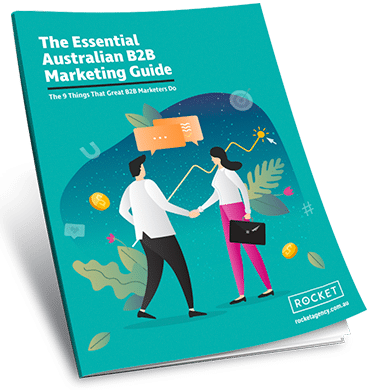
The Essential Australian B2B Marketing Guide
The 9 Things Great B2B Marketers Do.
































